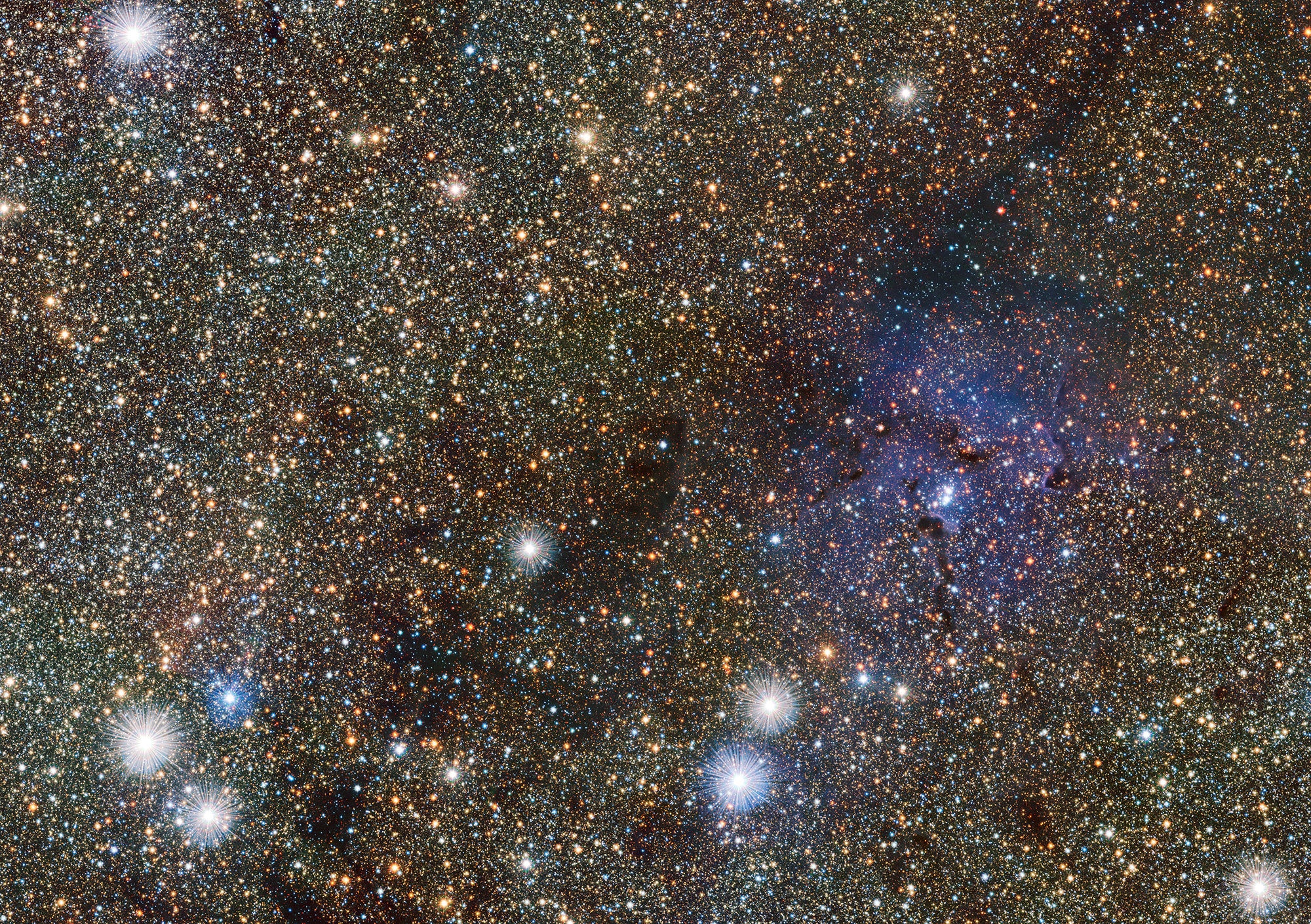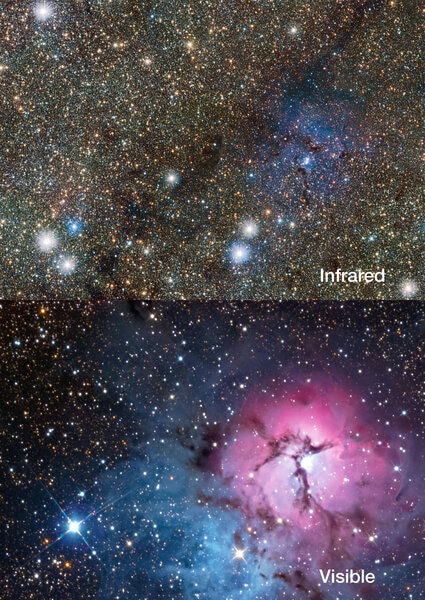Create a free profile to get unlimited access to exclusive videos, sweepstakes, and more!
A cosmic flower blooms invisibly

I write quite a bit about how we observe astronomical objects, not just the science of the objects themselves. But the two are intertwined, inseparable. What we glean from something scientifically depends crucially on what that object is doing, and what form of observation we make.
Use a big telescope, or a small one? Observe from the ground, or from space? And most importantly, what wavelength of light do we want to look at?
Oh, that last one. We see such a narrow slice of the electromagnetic spectrum, yet arrogantly call that razor’s edge “light.” Astronomers don’t use such a generalized term anymore; we call it “visible” or “optical” light, to note that this is what our eyes see. But outside that capability is a rich and diverse cast of photonic characters, including gamma rays, X-rays, ultraviolet, infrared, microwave, and radio light. These are all physically the same as the light we see, but with different energies (or wavelengths, or frequencies, if you prefer; they are all related to one another).
But this does have a fundamental effect on things. Cold objects emit longer-wavelength light, hot ones shorter. Magnetism and strong gravity can change this as well, giving cold objects the ability to emit high-energy light (we call these non-thermal processes). And the light itself has different capabilities. Radio waves can pass through thick dust that would stop optical light cold. Blue light tends to scatter (get shot around like a pinball off a bumper) when it hits a dust grain, while redder light passes through.
Oh, you want an example? Well, I have one that’s so perfect I will use it as a canonical example of this from here on out.
In the constellation of Sagittarius, about 5,000 light years away (or less; the distance is difficult to determine), lies the Trifid Nebula. It’s a big, bright, star-forming gas cloud, and is easy to spot in binoculars. It’s a favorite among amateur astronomers for that reason, and also because in photographs it displays a beautiful blue hue in one patch next to another that is a deeper red; the stars being born emit a lot of blue light that reflects and scatters off a nearby dust cloud, while the hydrogen glows red due to electrons jumping in the gas, atomic transitions forced by quantum mechanical laws.
Behold! The gorgeous and colorful Trifid Nebula!
Hey, wait a sec. All I see are stars, and maybe a faint bluish hue smeared around! Where’s the nebula, the spectacular colors?
You can’t see them, because this is an image taken using an infrared detector. It was observed as part of the VISTA Variables in the Via Lactea, or VVV survey. VISTA is the Visible and Infrared Survey Telescope, located in Chile, a 4.1-meter ‘scope designed to look at wide patches of the sky in the visible and infrared.
In this case, the gas in the Trifid isn’t visible because it doesn’t emit light this detector can see. You can see dark ribbons of dust, and lots of stars — we’re looking right toward the center of the Milky Way, where such delights are common. Like any color image, it’s a combination of several different wavelengths of light, from 1.25 microns (a tad less than twice the reddest wavelength our eyes can see) out to 2.2 microns. Hydrogen emits some infrared light around 1.2 microns, and that filter is colored blue here.
But I said hydrogen glows red. Well, that’s true. It emits at lots of different wavelengths, though generally most strongly at about .65 microns, which is red to our eyes. The image above uses visible colors to map invisible ones, so the shortest infrared wavelength is colored blue, the middle one green, and the longest red.
So what does it look like in visible light? Well, let’s compare!
Ah, that’s better (there's also a slider where you can compare them superposed, which is fun). And you can see why it’s called the Trifid; those dark dust lanes trifurcate the gas, making it look like a three-petaled flower.
It’s actually rather entertaining to compare the two images; what stars are bright in one and not the other? What stars are completely invisible in visible light, blocked by dust, yet obvious in infrared? What appears in both?
It’s questions like these that led to astronomers understanding the physics of the Universe. Once we figured out that different kinds of light do different things, the field of astrophysics was born, and the cosmos opened itself up to us.
Almost like a flower, you might say.
So the next time you’re outside under a starry panoply, keep in mind that what you see is most definitely not what you get. The Universe is far richer than we can merely see, with hidden treasures just waiting for us to uncover. All we need to do is see them in a different way.




























